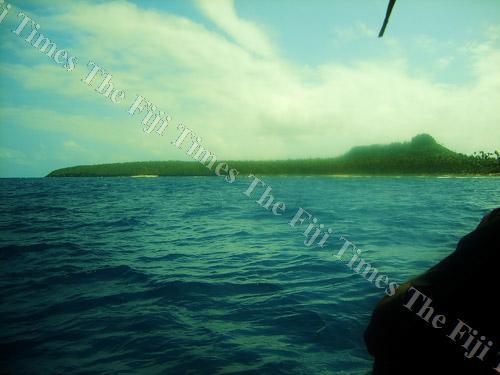|
|
||||
| From Fiji Times Online (30 March 2013) Managing the unavoidable for Cikobia by Monifa Fiu
THE phrase 'wind-whipped' comes to mind when I first sighted the island of Cikobia. The 10-passenger boat drew closer and the scene that greeted us was of a lone adult and a group of children, standing on the beach, against a backdrop of tall slighted bare coconut trees. Much later I found out that the number of children on the beach made up that age group on the island. There was only 105 people living on this most northern island of Cikobia during that visit three years ago. The 18.9 km squared island is situated at a distance of 105.4 km off Vanua Levu which at most times worth at least 6 hours of boat-time. Cikobia is made up of limestone and one can see remnants of volcanic outcrops. There are fragments of upland and shoreline native forest but much of the land has been replaced by grassland due to burning for planting of crops, introduced pine and coconut plantations. Cikobia also retains one of the earliest documented lapita archaeological sites in Fiji as evident in the remains of several groups of monumental fortifications on the island. The accounts of sizeable colonies of coconut crabs (threatened or extinct in many parts of Fiji and the Pacific) is true. I was blessed to have shared sumptuous delights of this crab-meat presented from an open fire on the beach or the cooking pots, a delicacy treasured by the community. Other biodiversity features on Cikobia include local populations of sea turtles and sea birds. Remote Cikobia is situated in the path of cyclone tracks through Fiji with a history marred by the sea tragedy that is lyricised for songs and stories remembered by the islanders. The isolation limits access by this small island community to basic services, communication and opportunities usually taken for granted by many of us. This rural island community depends on its planting of root crops and fishing with minor sale of cut copra, pandanus and beche-de-mer. There is one health centre and primary school education offered on Cikobia. The connection of this Rotuman's story about Cikobia sprung when LajeRotuma Initiative partnered with the Cikobia Development Committee to share community stories of change and experiential learning of how to manage the unavoidable. This engagement under an ongoing project on the island is supported by the UNDP GEF Small Grants Programme. Cikobians are rich in history and strives to improve their understanding of how best to manage their land. Community members returning home have reported an increase in unsustainable land use practices like uncontrolled burning and clear felling of native trees without efforts for replanting. This has resulted in gradual decline in quality of crop productivity and manufacture of traditional crafts linked to available natural resources on Cikobia. The situation is stressed further with noticeable changes in pattern of average weather over the years such as longer dry spells with less rain causing water shortage on an arid island or the increased stormy seas causing coastal erosion. Cyclones and storms regularly affect the island as it often lies within their path as it traverses the Fiji group. For example, Cyclone Daman that passed through Fiji in November 2008, devastated the island homes, service facilities and gardens to a worth of over half a million Fiji dollars (Northern Division Report, 2008). There is a growing need for communities like Cikobia to understand the changes, a first step to an integrated approach to community development for a declining island population, protection of biodiversity and safeguard livelihoods. This story details Cikobia's efforts to bring out the possibilities of a land use plan to avoid the unmanageable. The ongoing community awareness outreach program on the island with guidance from the Cikobia Development Committee include topics on land use, forest functions and protection, land use training, reforestation program and reviving traditional community crafts through improved land use management. LajeRotuma volunteers engaged in this process were involved in the awareness and survey component on marine resource use and sustainable practices, based on experiential learning from Rotuma for the past decade in exploring and understanding the varied manifestations of change along our shores. For both sister communities a commonality threads our existence despite the isolation and limited access to external support. We must learn from our rich history of self-reliance and innovation to safeguard a better future for ourselves amidst a setting of environmental change, lest the unmanageable is caused by us. * Monifa Fiu is an environmental consultant and climate adaptation planner. She is also the co-ordinator for LajeRotuma Initiative. Email: monifafiu@gmail.com. |





